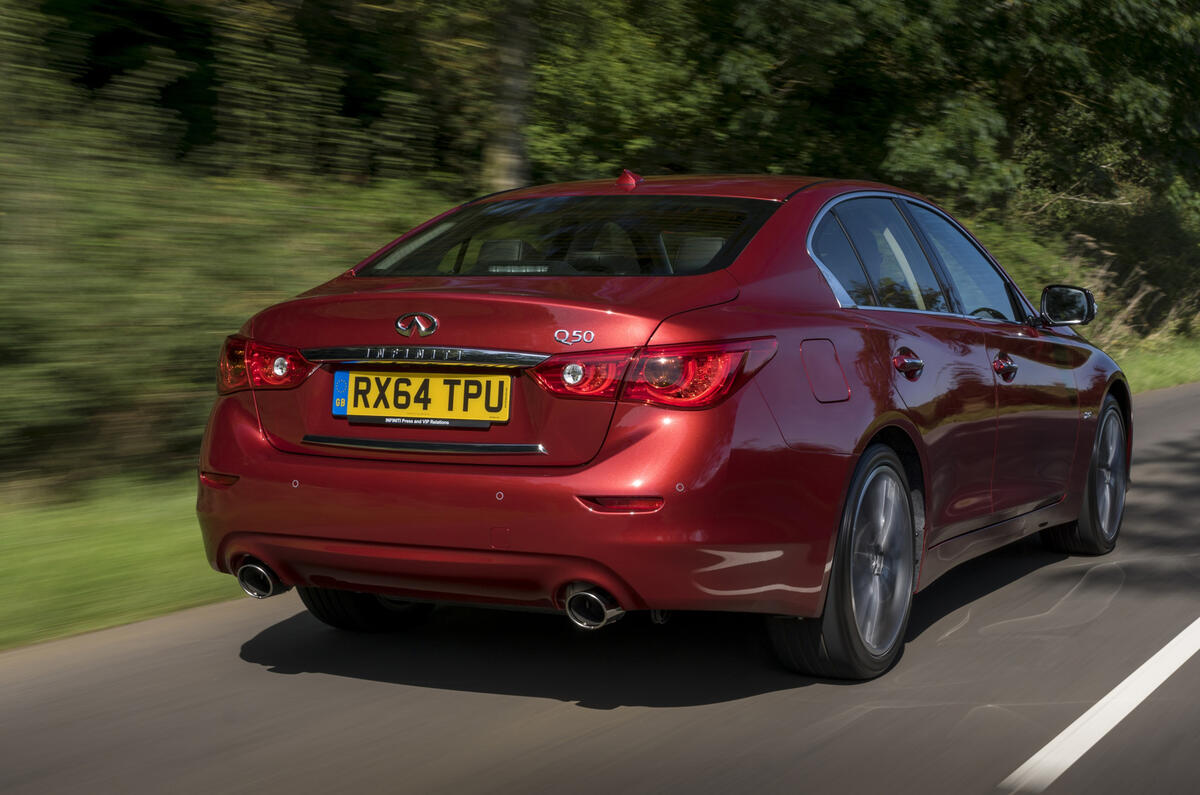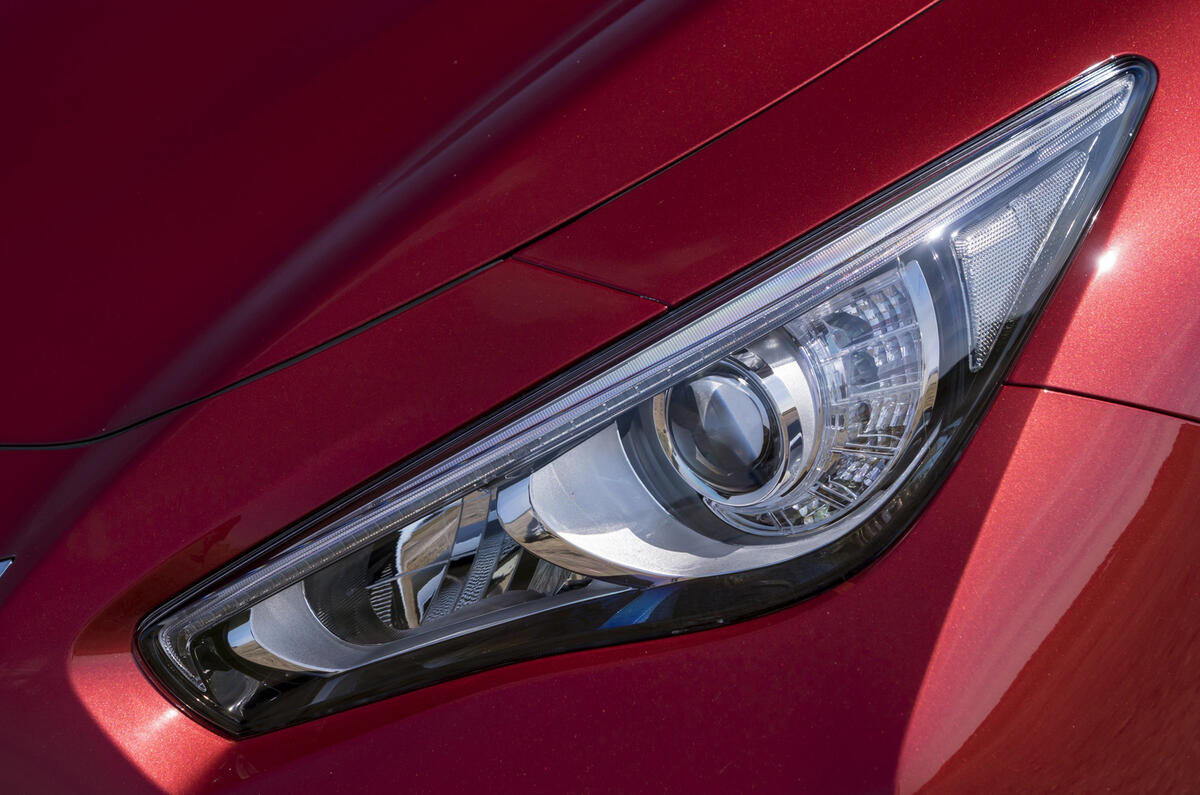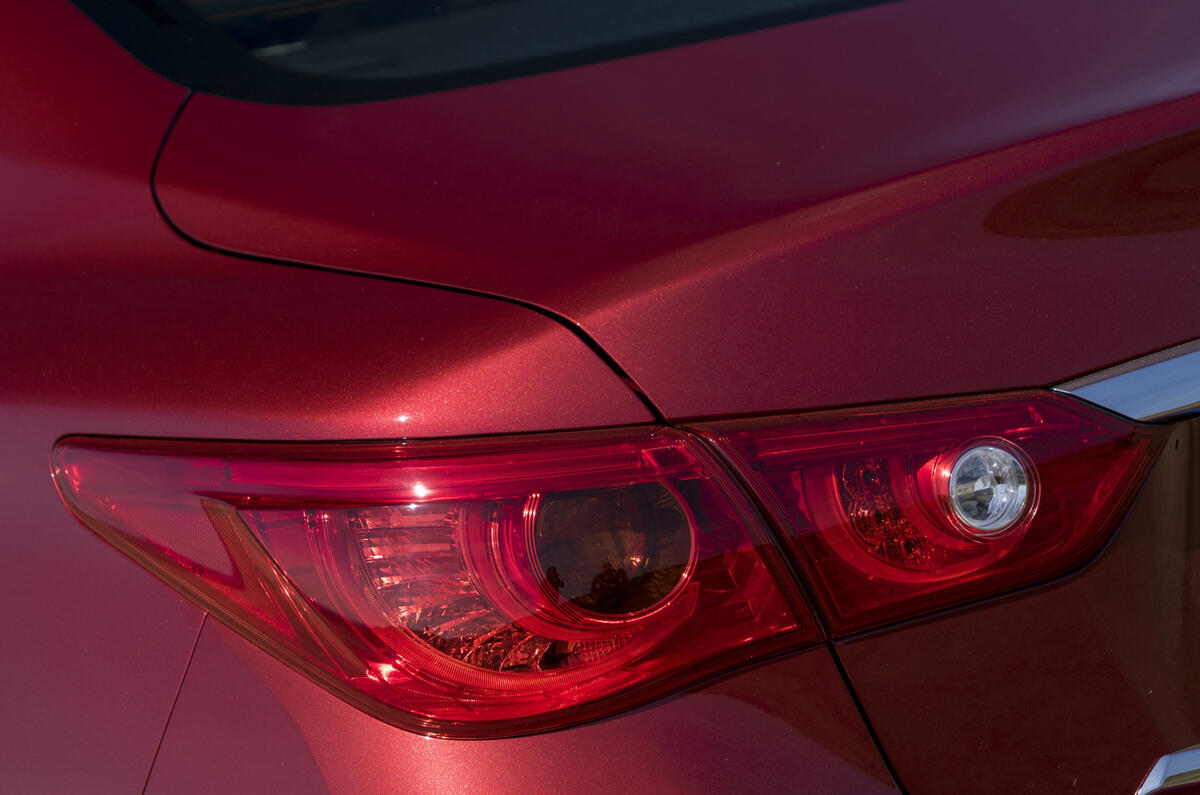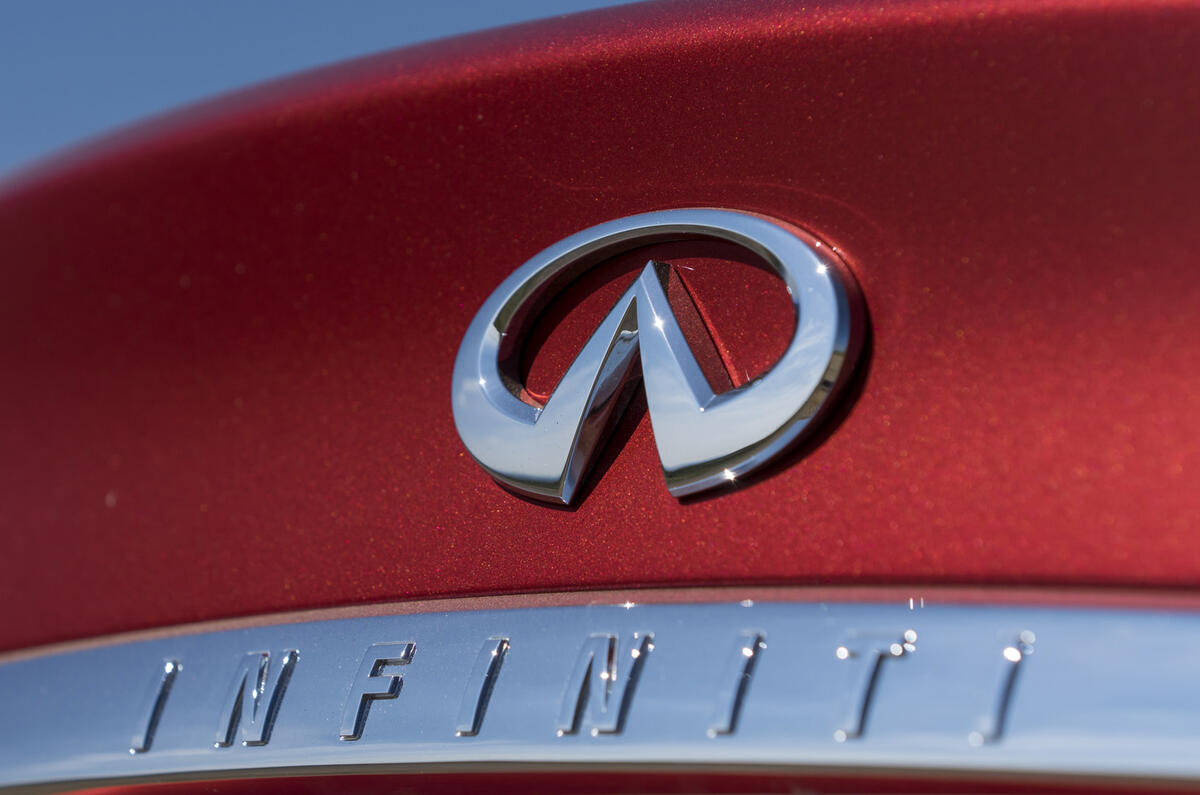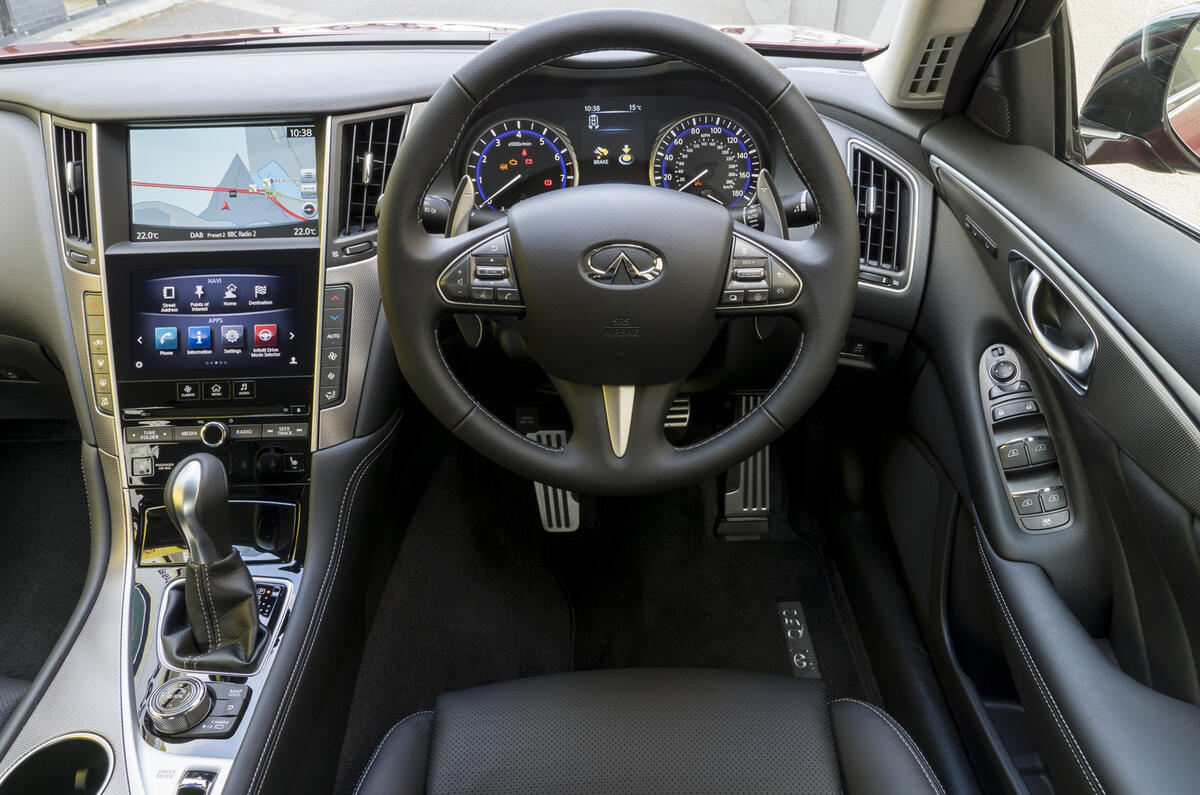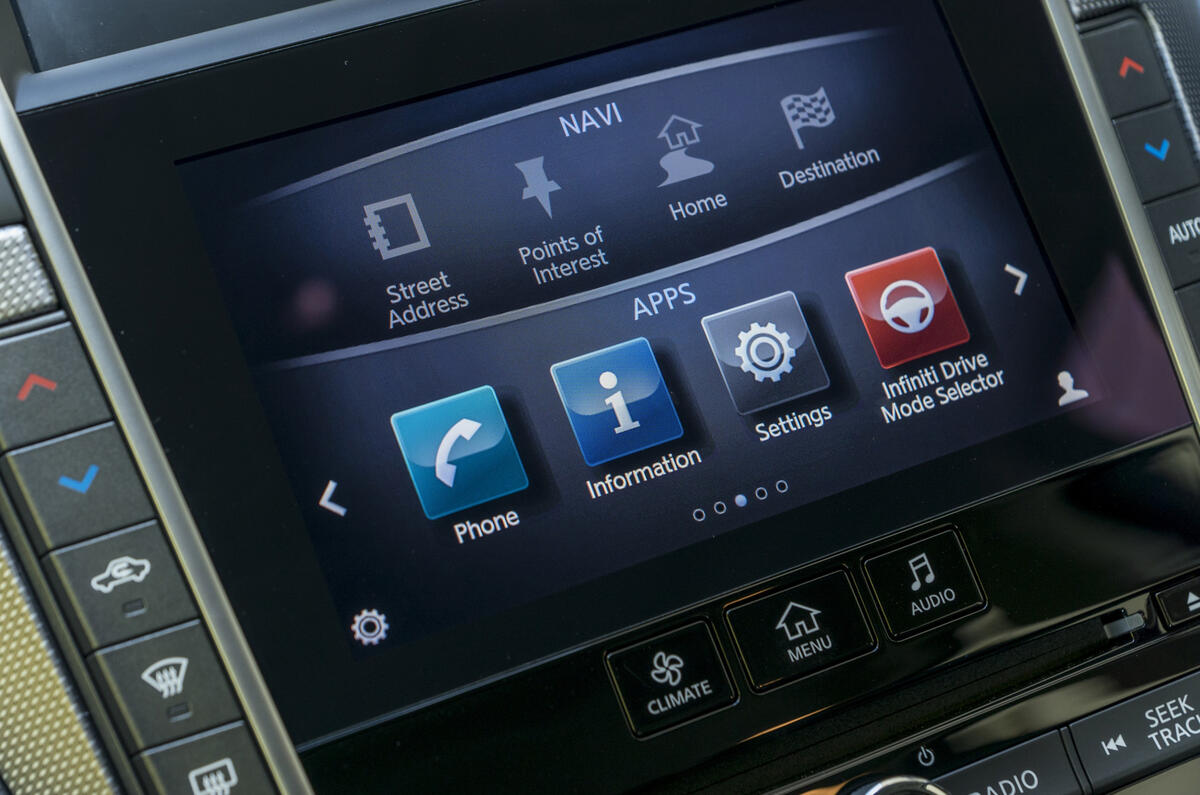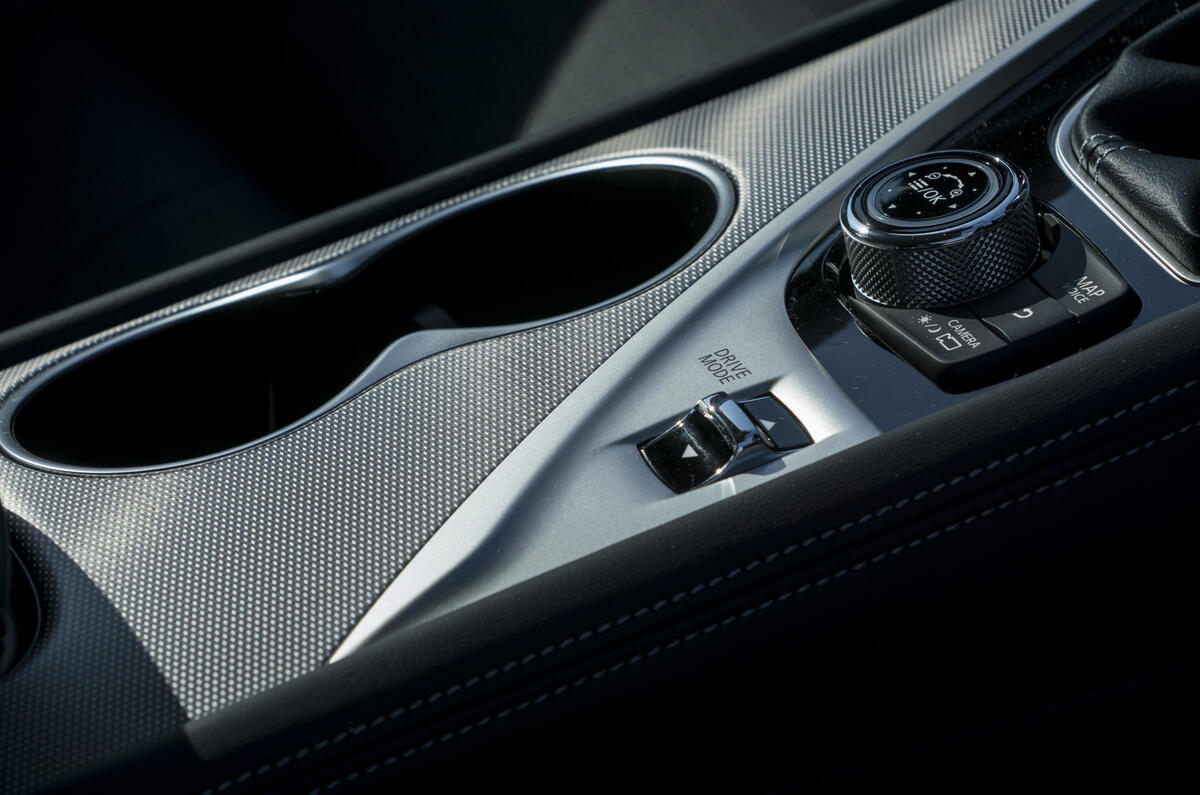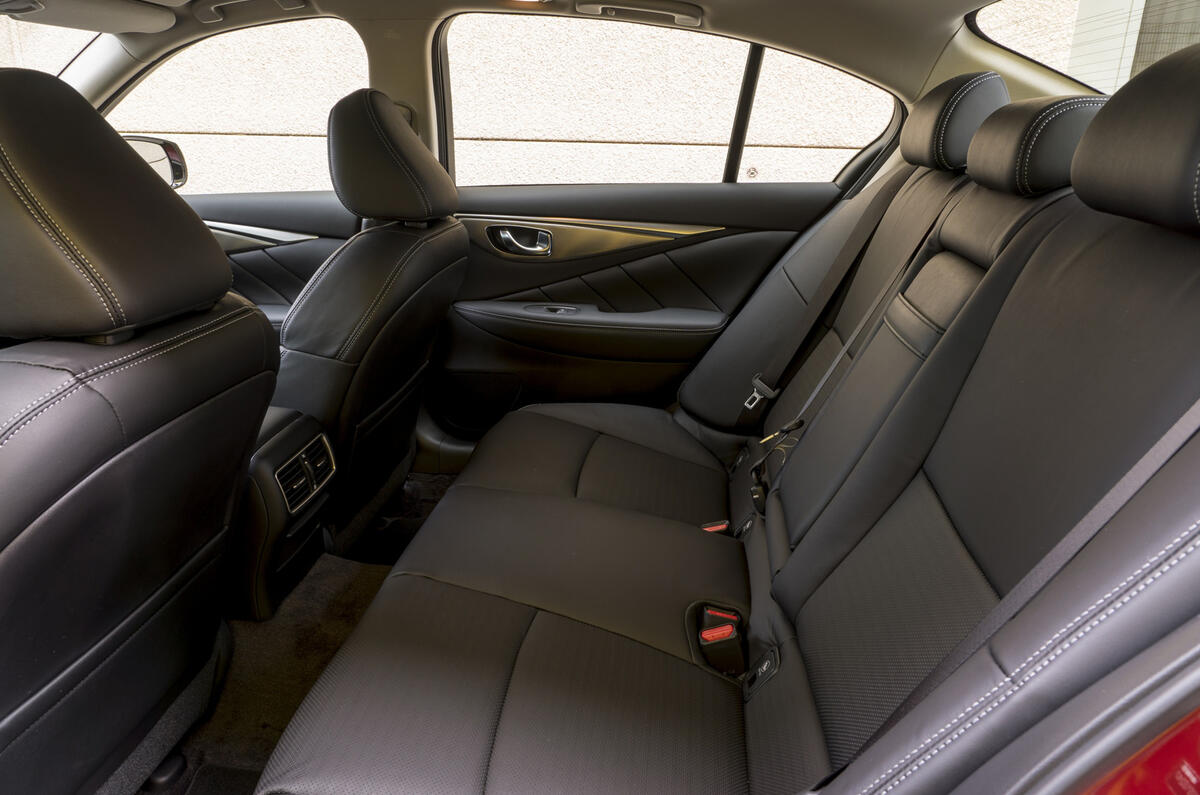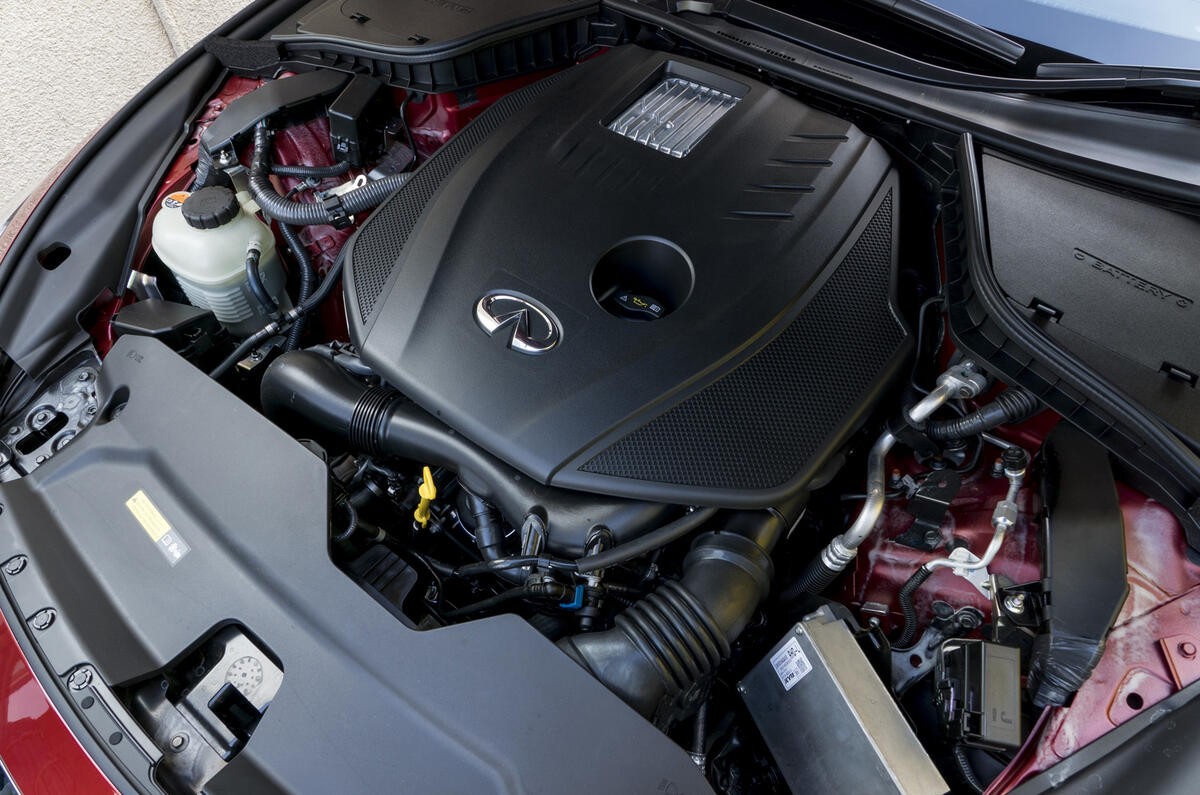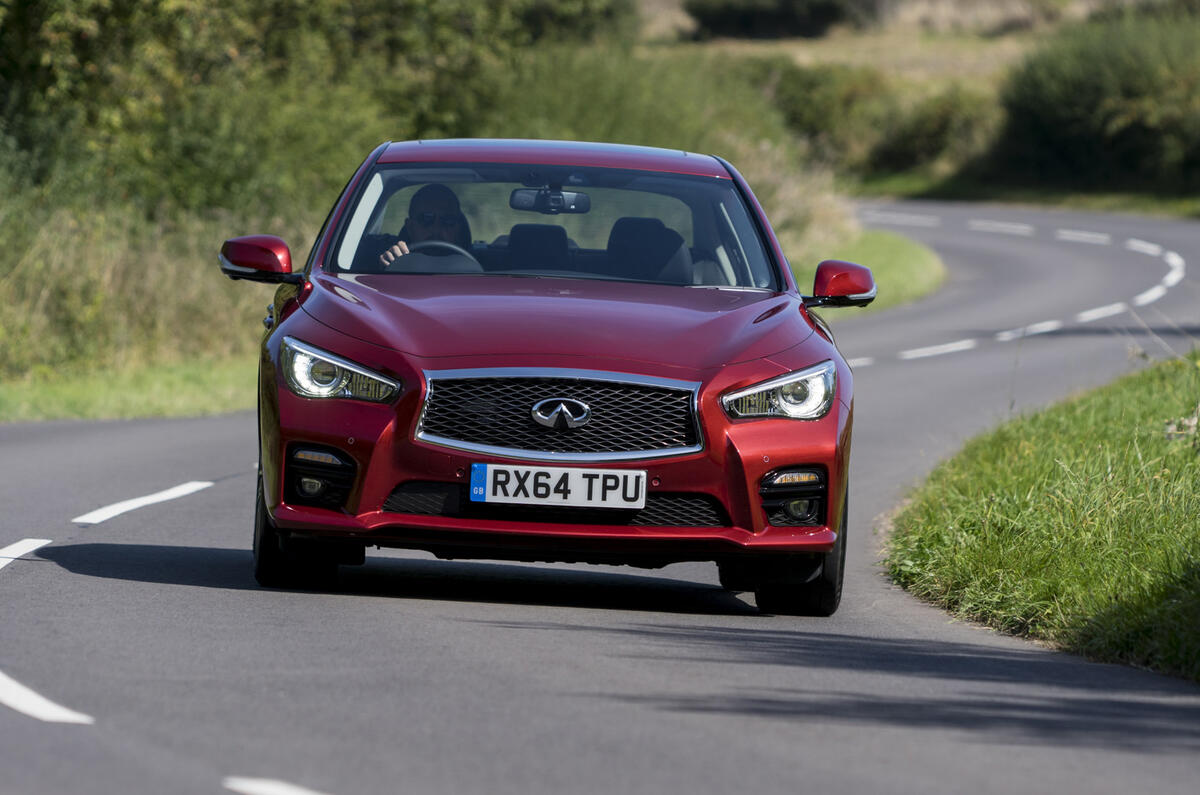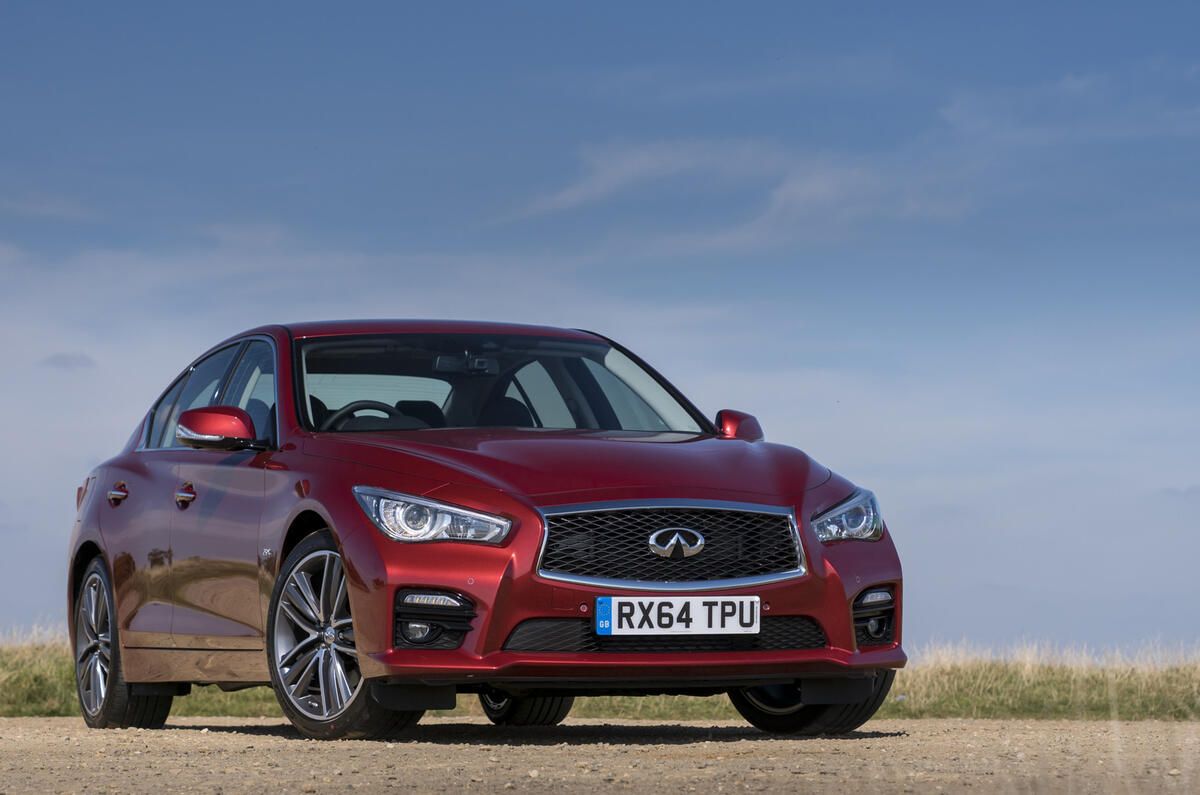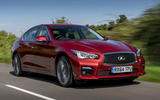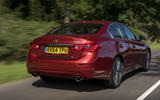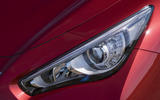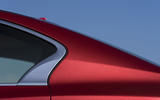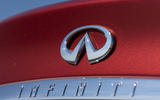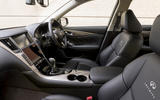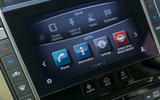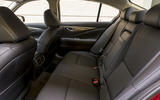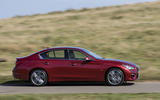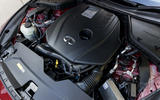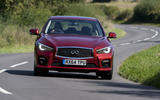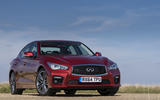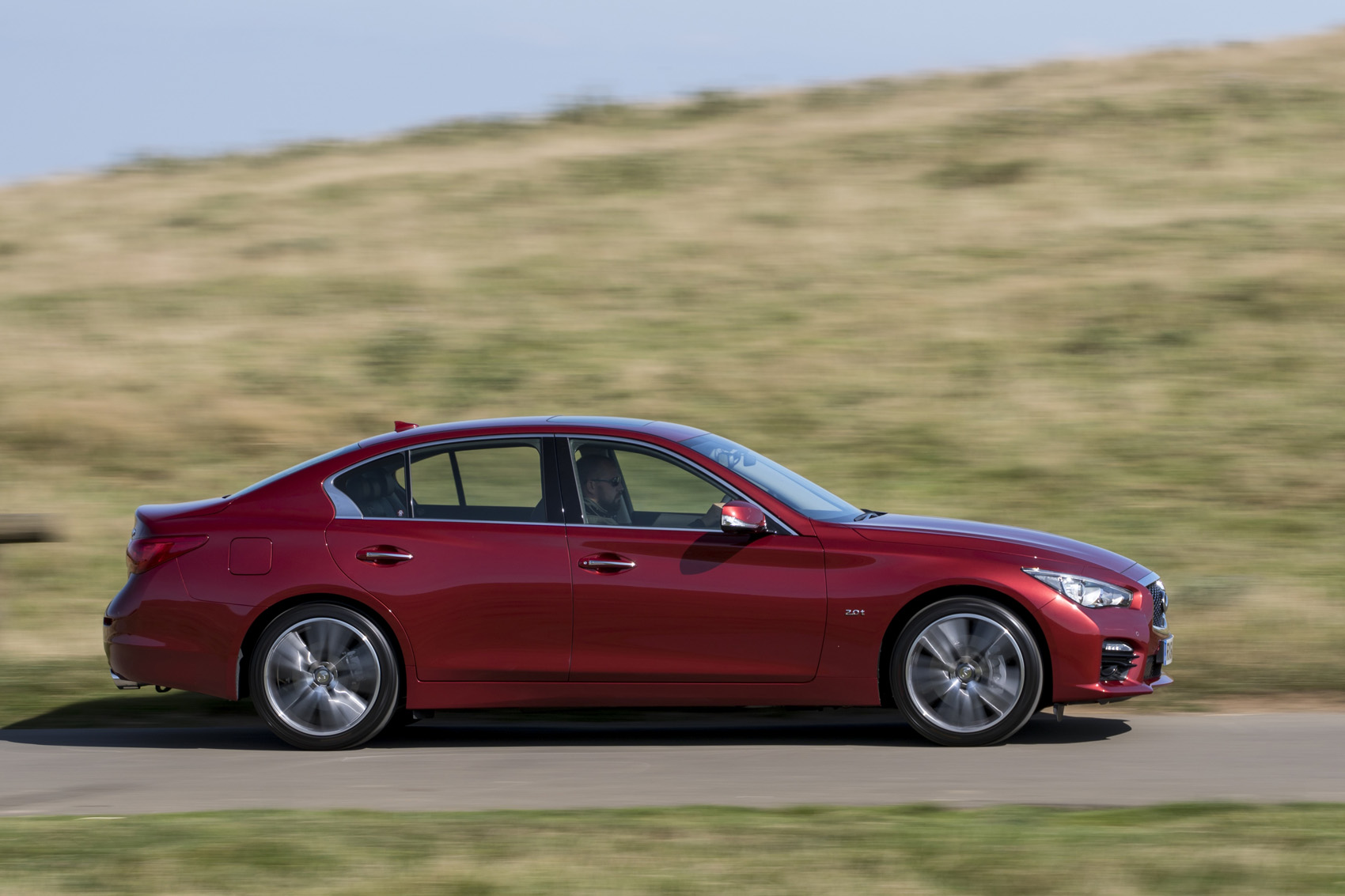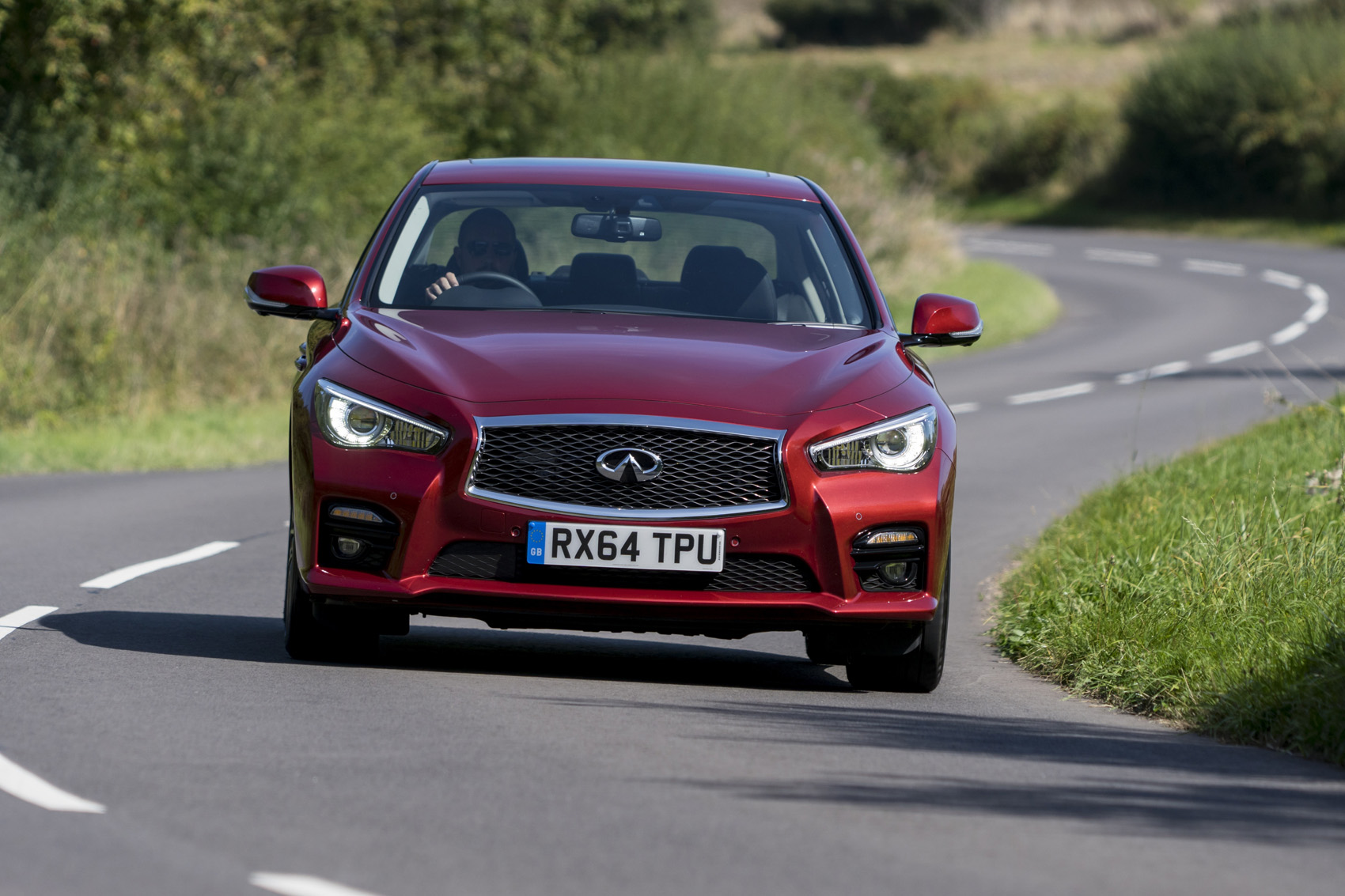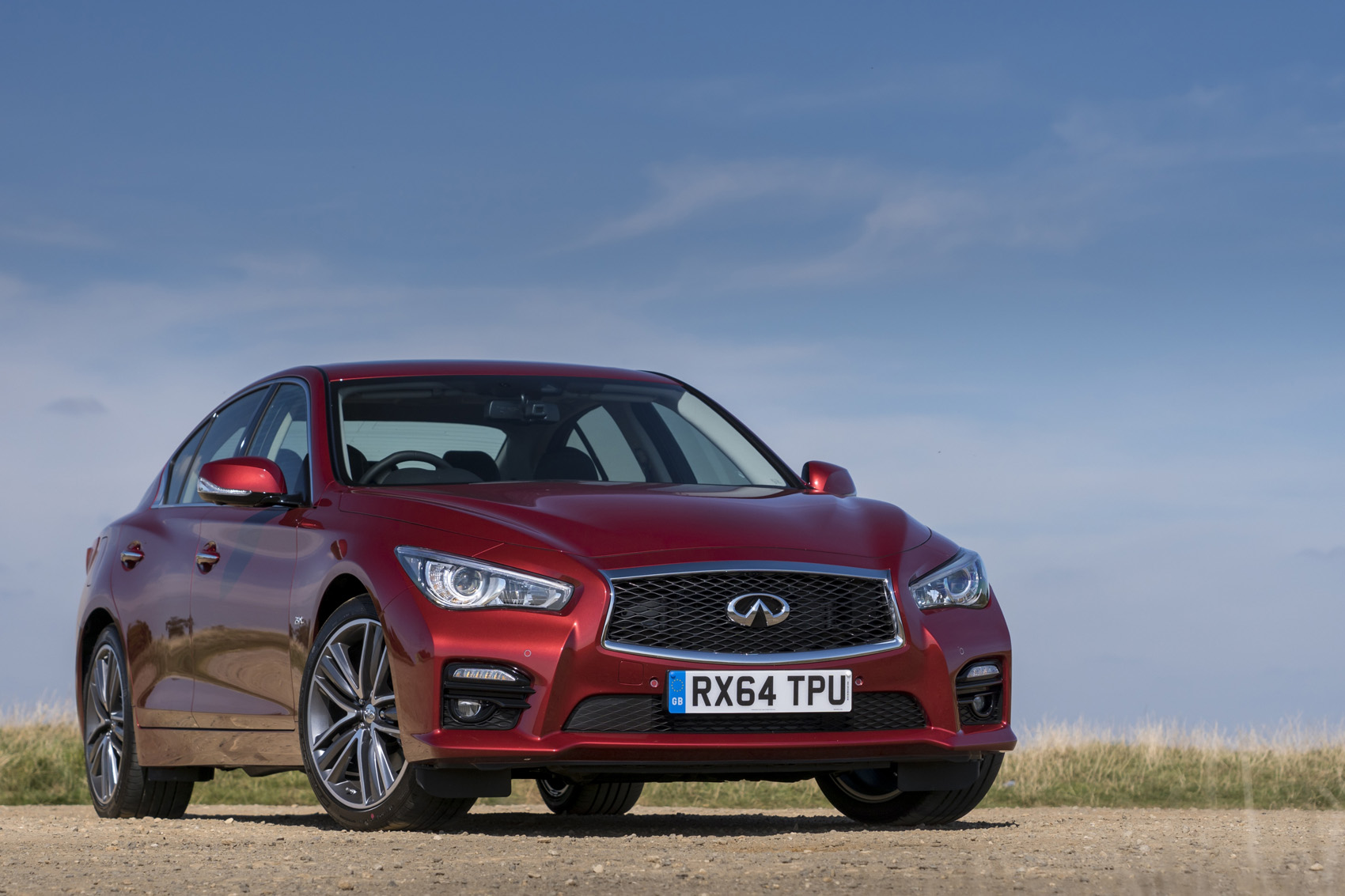Trim levels include SE, Premium, Premium Tech, Sport and Sport Tech. Hybrid models are the range-topping variants and are offered in equipment-rich specification only. Opt for the entry-level Q50 in SE trim and you'll find a reversing camera, 17in alloy wheels, parking sensors, dual-zone climate control, parking sensors, Bluetooth, USB connectivity and dual touchscreens as standard.
Upgrade to Premium and you get leather upholstery, heated front seats, auto-dimming rear-view mirror and engine start-stop function, while the Premium Tech models throws in Infinti's Safety Shield systems, a Bose stereo, a 360-degree camera system and Infiniti's InTouch infotainment system complete with sat nav.
The Sport trim includes 19in alloy wheels, adaptive steering, sports seats, magnesium paddle shifters, adaptive LED headlights, keyless entry and a sporty bodykit, while the Sport Tech trim adds all the technological niceties found on the Premium Tech models.
If there’s one avenue of European excellence that Japanese manufacturers have failed to emulate over the years, it’s the high-class ambience of a premium saloon. On one hand, the Q50 is a case in point.
For all the functionality dispensed by dual LCD screens, the dashboard is a chunky, charmless affair, littered with too many buttons and precious little flair. On the other, it feels very well made, highly legible and, with swipeable, pinchable touchscreens, a technological step ahead of its Teutonic peers.
Everything else – switchgear, vents and so on – has been swept aside for the seven-inch and eight-inch displays in the centre stack, which can only be incorporated by piling them on top of one another. By default, the uppermost screen deals mostly with the sat-nav display and parking cameras, while the lower one tends to control other functions, including the Infiniti Drive Mode Selector.
However, if space shuttle levels of infotainment weren’t sufficient to make your brain spin, Infiniti has built in a similar degree of control redundancy. Aside from the map, most features can be accessed from both displays and controlled via voice, button and fingertip input.
Elsewhere, the Q50 is much easier to understand. The instrument cluster could hardly be clearer, and it’s not hard to get a comfortable driving position. Visibility is also good, and although the refinement is somewhat affected by engine drone, 66dB on the motorway (in the diesel variant) is acceptable.
In the back, passengers are treated to rather comfortable seats, although the legroom ahead of them isn’t overly generous. The middle perch, blighted by a high and intrusive transmission tunnel, is strictly reserved for the discomfort due an arch enemy.
Infiniti claims a boot capacity of 500 litres, but with a floor that slopes up to make room for the car battery beneath and a lid reluctant to offer any hydraulic assistance whatsoever, it hardly seems 20 litres more convenient than that of a 3 Series.
The Q50 comes also with Bluetooth and it connects to a smartphone without fuss. From there on, things get a bit fiddly. Your mobile can be accessed in multiple ways, which you’ll find either incredibly convenient or unnecessarily complicated.
As standard, the Q50 has a six-speaker stereo, providing USB and Bluetooth streaming connectivity. However, the likely popular Multimedia pack features a much beefier Bose system complete with eight extra speakers and a DAB tuner.
Somewhat surprisingly, Infiniti’s navigation system isn’t included on any trim level. Instead, it must be added separately or as part of the aforementioned Multimedia pack.
When it is on board, it’s usable enough and benefits from the large native display – although it could use an upgrade in processing speed if the pinch zoom is to be used more consistently.



